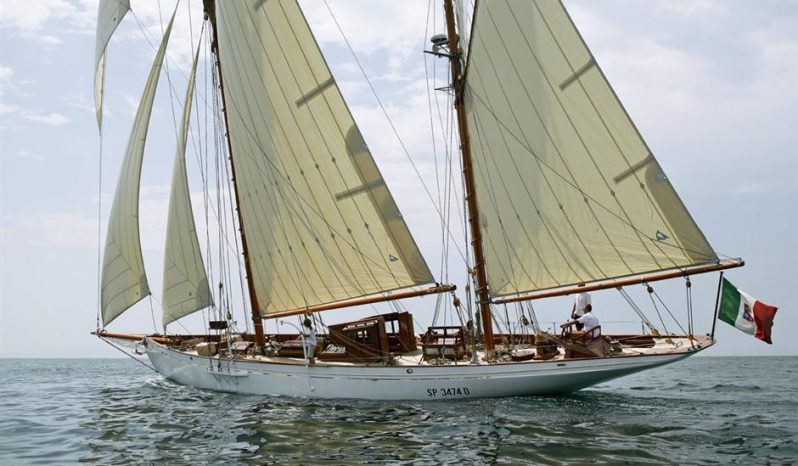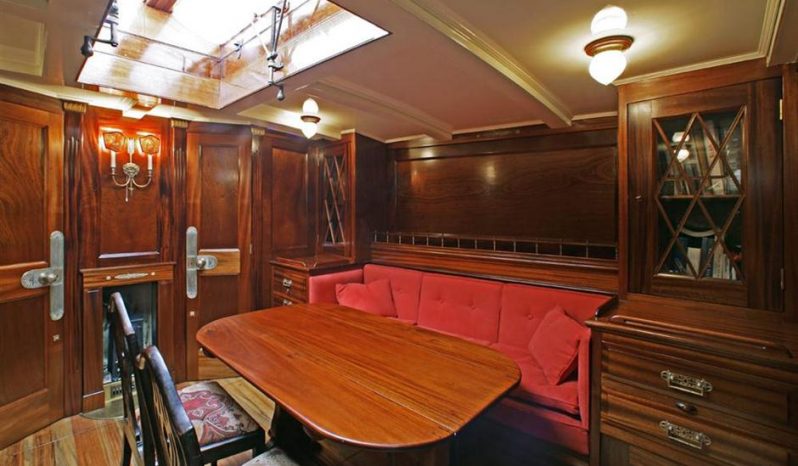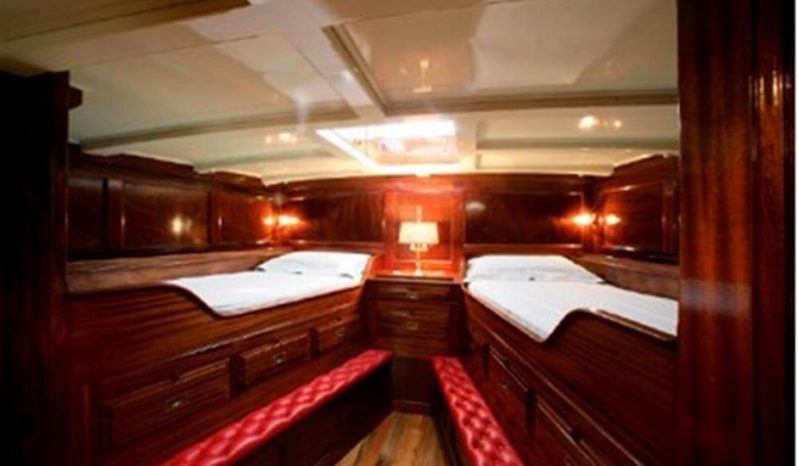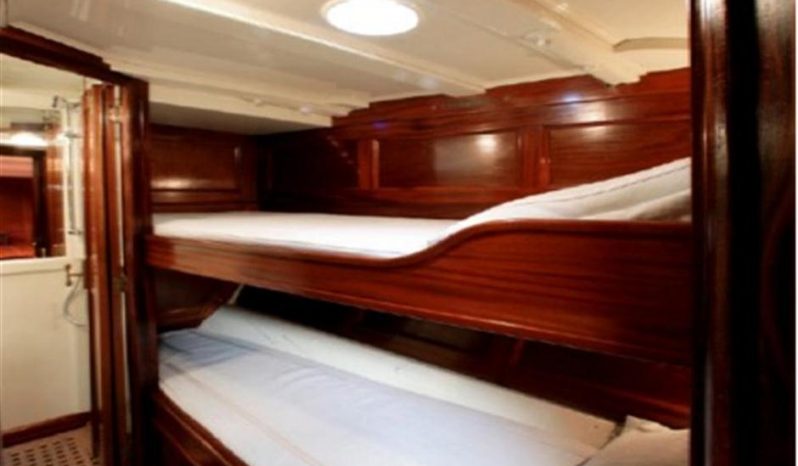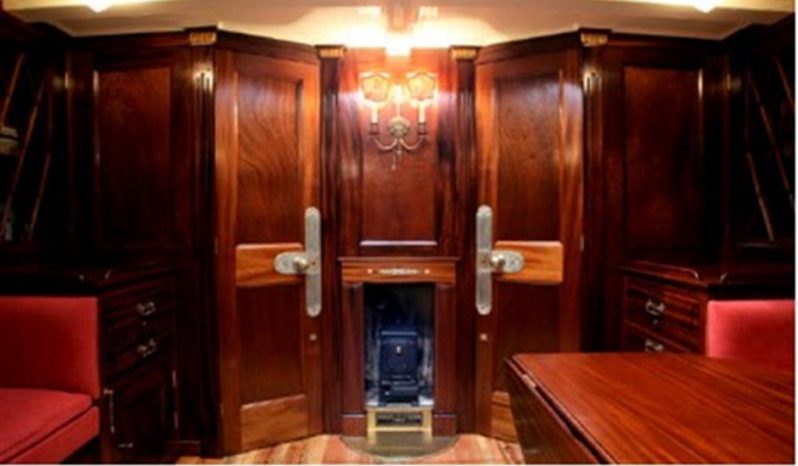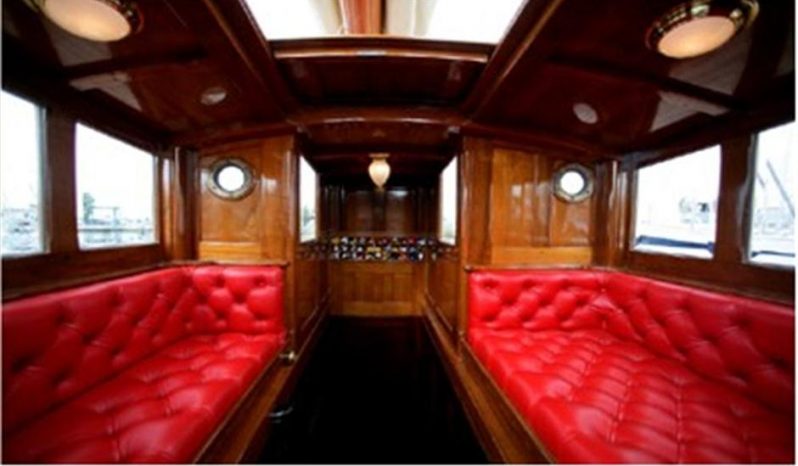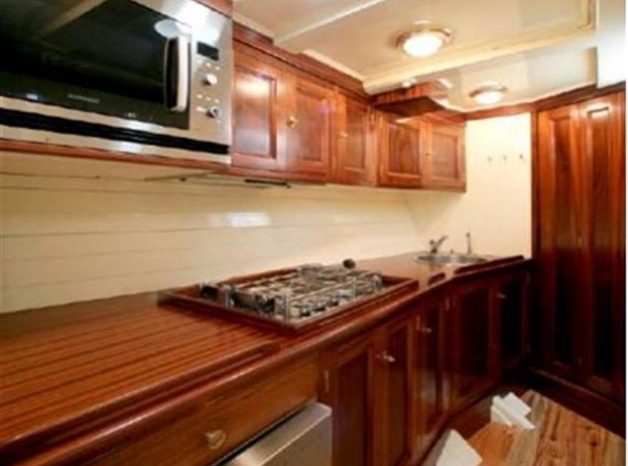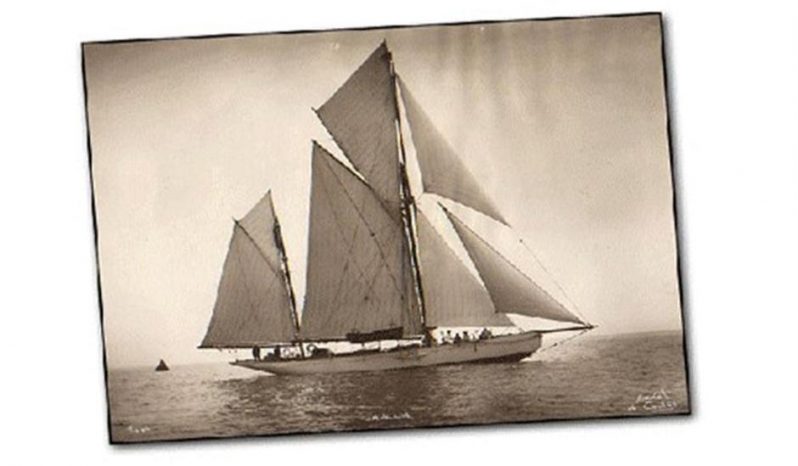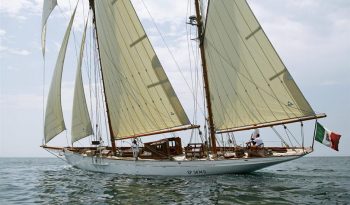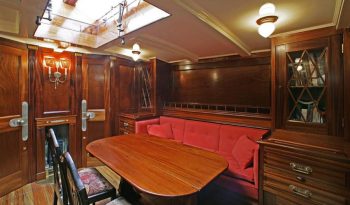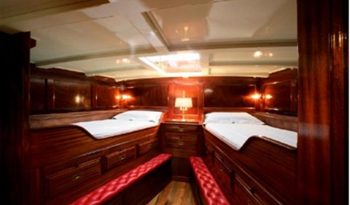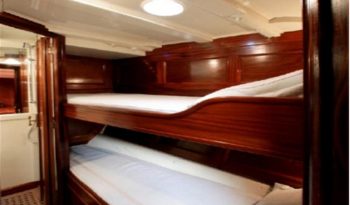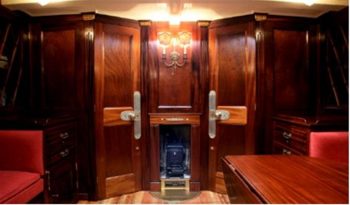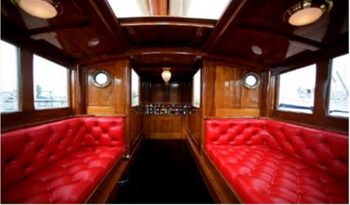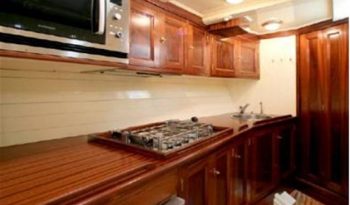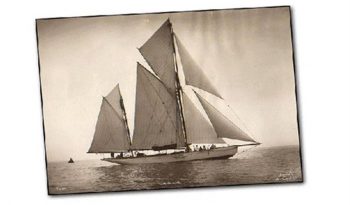Javelin was designed in 1896, launched in 1897 and the information taken fromthe Lloyds, Royal Yacht SquadronandRoyal Corinthian Y.C. archives states:» the wooden sailing ketch Javelin was included in the Lloyd’s Register of Yachts 1898/99 edition.
She was built by Payne & Sons, Southampton (later Summer & Payne Limited) and designed by A. E. Payne. She was completed in 1897 and registered in Southampton. Her length: 63’5», breadth: 14’3» and depth: 9’8». Her sails were made by Ratsey & Lapthorne in 1897. At the turn of the century her registered owner was: E.R.T. Croxall of Manor Aldridge, Staffordshire who also owned the 9 ton Shulah. With Javelin, Mr. E.R.T. Croxall won the second prize at the ocean race from Cowes to Waymouth After different owners
In 1950, the boat moved to the Mediterranean and then we lost track of her. We only know that she was registered at theReal Clube Nautico of Barcelona but we do not know the name of her owner. In the summer of 2002, her name was changed to «Javelin of Northam» and she was in a state of complete abandonment in the port of Soto Grande near Gibralta.
Mr. Herve’ Decker, in charge, for Spain and Marocco, of the Sailing Channel — the European satellite television station specialising in the world of sailing — saw her and fell in love with her. Mr. Decker realised immediately that the boat was of immense interest and that her resurrection could be a great story to document and to present to enthusiasts.
Accommodations
The AFT-quarters are occupied by the owner. This cabin features 2 x low beds, vanity, desk, 2 x wardrobes, skylight anda bathroom with a WC, basin and «the bath tub», the status symbol for a lady of those times.
Forward is a double guest cabin with wardrobe on the starboard side and WC with basin and shower
In mid quarters the Saloon offers a seating area with a table seating 6 people, skylights and 2 x sofas and a fireplace which was reintroduced after restoration.
Companionway from the dog house with small divans and chart table
Engine room with access on the starboard side
Fore peakdining table
Entrance from the deck with ladder
WC with a basin and a shower
Equipped Galley is on the left forward w/ by skylights
The fore peak houses the crew in 3 x berths.
Hold for sails and Stowage space and the aft lazarette
Engine /Mechanical Equipment
Engines: 2 x Steyr 166 hp 2600 rpm
2 x Linde-Gueldner hydraulic motors
Propulsion: 2 x Max Prop screws
Batteries: Sonnenshein 800 A gel
Chargers: 1 xBattery charger unit
Inverter: 1 xInverter unit 4500 W
Hydraulics: 2 x Linde-Gueldner hydraulic pumps
Water Maker: 1 xSpectra 250 l/H
Water System: 2 x Electronic autoclaves for hot and
cold water supply
Toilet System: 1 xTecma electric WCs
Sewage System: 1 xWaste water system
Passerelle: 1 xBoarding ladder
Ground Tackle: 3 x 50 kg admiralty anchors
Galley
1 x Samsung oven
1 x Hob with 3 flames on gimbals
1 x Freezer 24 V
2 x Refrigerators 24 V
Remarks
Restoration between 2002 and 2006
To restore a boat means bringing it back to a new life without changing its soul or character. All the work on Javelin is based on these principles and the necessity to make concessions to modern times has been kept discrete and toned down on purpose.
In this way, above all, her motorization, non existent at the time she was launched, will give the boat much more speed and the manoeuvrability of a motor yacht thanks to two engines and two screws with hydraulic transmission. This does not interfere in the slightest with the interior layout of the boat which retains its original form and this choice was motivated by the desire to keep the original helm 100% in tact.
The same can be said for the electronics, which cannot be done without today. They are, however, completely invisible except for when they are in use. Whilst there are modern accessories in the galley and in the bathrooms, we did not want to relinquish the Victorian style and the master bathroom boasts the presence of «the bath tub», the status symbol for a lady of those times.
The saloon, which incorporates numerous fittings, of the epoch is further embellished with the reintroduction of the fireplace which existed when the boat was launched but eliminated in later years: in Beken’s photo of the period the chimney pot is clearly visible on the deck. The sails reflect in the closest detail the boat of 1897 whilst rigging has been assisted by the use of electric winches, strictly in bronze.
All the hardware on deck is also in bronze whilst we have been able and have preferred to keep the original hardware in forged steel for the masts.
Interior Design
The interior designer Paola Moretto has concentrated herself deep in the Victorian soul to give back life to all the inside arrangement and taking care of every small details like colours and fabrics.
The interior layout of the boat retains its original form. This choice was motivated by the desire to keep the original helm 100% in tact.
Carpenter
Thank to twenty years work in Argentina in the shipyard of German Freres father , Fabian Lomez took care of the wooden work from the wood choice to the coordination of the five carpenters involved in this huge refitting: he built one by one all the new frames, he built the teak deck and brought the vessel back to the water
Alto Adriatico Shipyard Team
“Artists” the only correct word to present the team of Alto Adriatico Shipyard — the smallest Italian structure specialized in the refitting of antique vessels. Thank to their work that is not carpentry but high level woodworking, thank to their experience which comes from years work under the keen supervision of the great “Maestro Sciarrelli”, they gave back structure and life to the inside arrangement
Rigging Restoration
The rigger Pier Francesco got alive again the soul of the boat. Everything is made by hand in the over 1000 meters of ropes that Javelin needs with full sails.
Enrico Parovel Sail maker
Javelin the needed the handwork, care and love, which only the tradition and more than 50 years of work has given Enrico Parovel. He was the ideal person as having the tradition of sail making for generations in the family. After seeing photographs of Javelin he came to the conclusion that everything had to be done just like in the end of the 18th century and that they were the right people for doing that.
Chief engineer Marzio
On board there is a lot of hidden and invisible technology, which doesn’t burden on the grace and the agility of the boat created engineless: the invisible motorisation makes use of 2 km of electric cables and electronics and enables the boat to run with a speed of 10 knots and to be handled like a motoryacht.Methodology and precision are essential on every boat and even more on Javelin: the motorisation that makes use of a hydraulic transmission and the control electronics borrowed by the aeronautics don’t allow improvisations
Materials used in Restoration
Hull with original planks in pitch pine 58 mm and Siam teak 58 mm & oak
New oak frames
New beams in white pine and red pine/
Burma teak deck
Masts all Douglas Fir
Original fittings in galvanized forged iron
Fastenings in Aluminium Bronze, Inox aisi 316 L
Original rudder Siam teak
Ballast Plomb
Safety And Fire Protection
1 x EPIRB
2 x liferafts AVON for 6 people
6 x Bilge pumps
1 x Set of Sea Water fire-fighting equipment
1 x Set of Engine room fire-fighting equipment
Fire extinguishers in all the cabins
Mandatory equipment
Sails and Rigging
Douglas Fir Mast/s: 1 xBowsprit
1 x Lower mainmast
1 x Main mast
1 x Main boom
1 x Main trysail gaff
1 x Mizzenmast
1 x Mizzen boom
Original galvanized iron & inox
Current Rigging: Textile cable
Winches (electric): 2 x LV manual drums mm (bronze)
5 x LV electric drums 140 mm (bronze)
Blocks: 115 x In wood and bronze
Deck Hardware: Aluminium bronze
Screw Couplings: Galvanized iron
Shrouds: Inox cable with traditional splicing
Tenders
1 x Dinghy 12′
1 x Outboard 50 Hp
Crane:
2 x Davits

